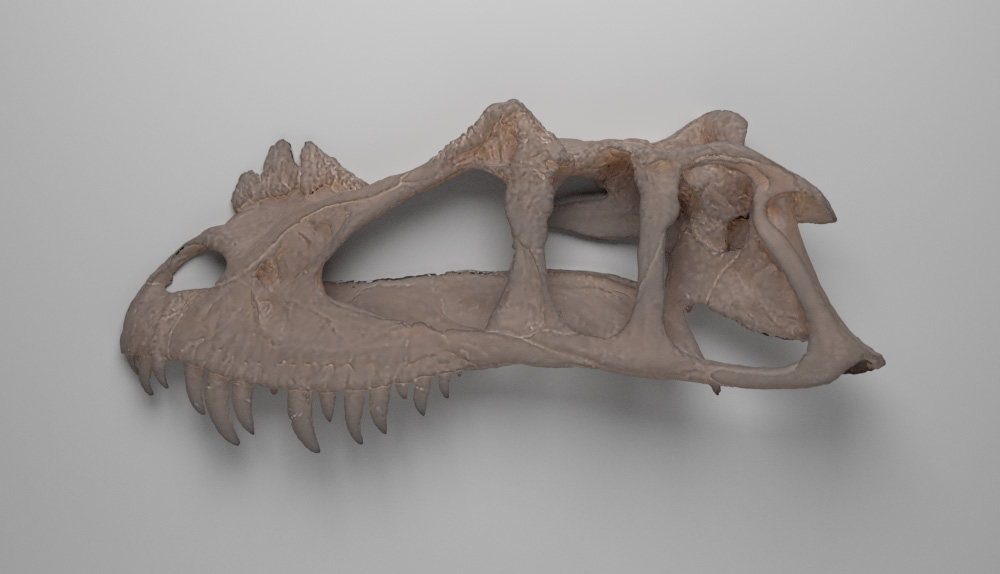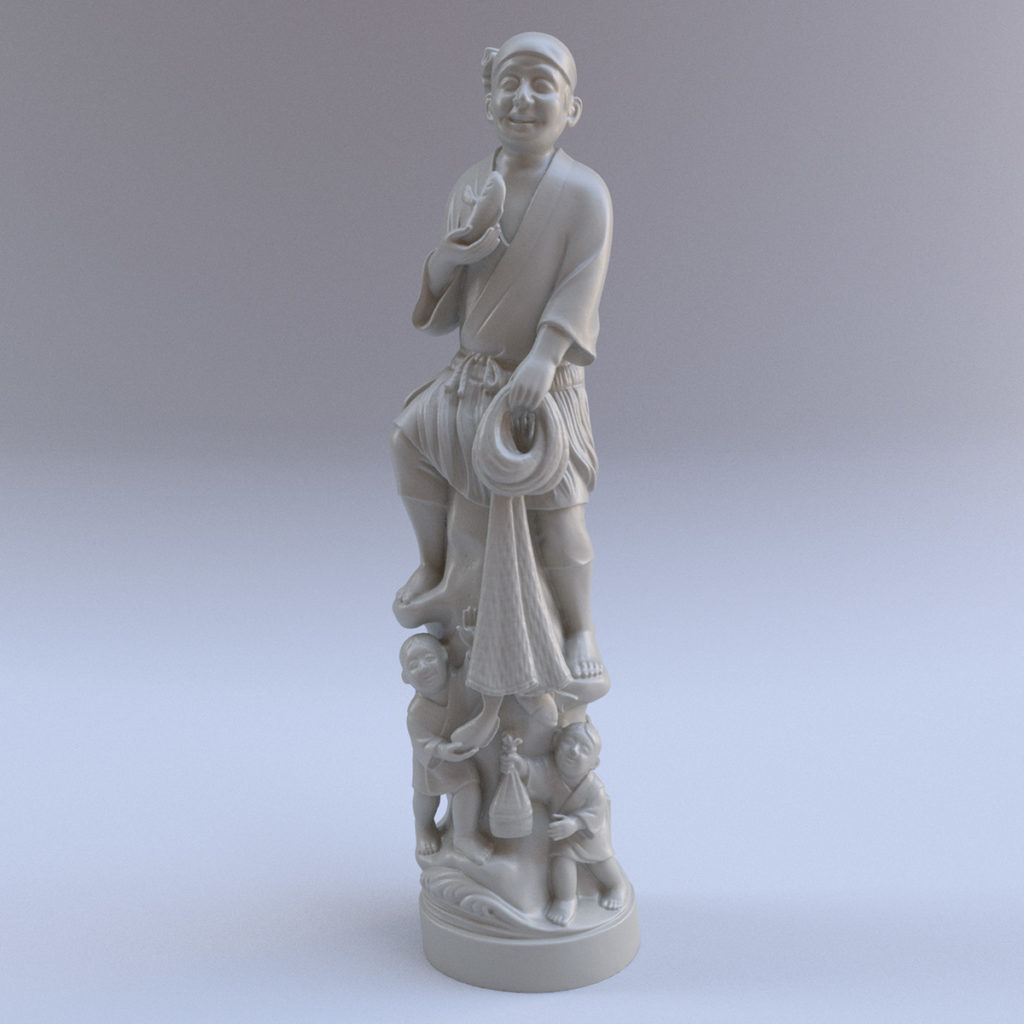This week we had the chance to take out our new handheld laser scanner and explore an auction house here in
Los Angeles. The plan was to see how easy it would be to scan and catalog part of their inventory. We chose
this location because it specializes mainly in Chinese art so they would have tons of small and intricately carved
artifacts. This was a great way to test the Handyscan’s capabilities.
Antique Chinese Carving
The first item that looked interesting was this statue carved from ivory. The piece stood about 40 cm tall and had no shortage of intricate shapes and minute details. Having scanned similar pieces in the past with both a structured light scanner and a Nextengine laser scanner we knew this would be no easy task.
What would have taken us easily three hours in the past now took only fifteen minutes. The 7 crossing laser lines quickly captured most of the surface except for small sections that couldn’t be seen by both cameras simultaneously. To solve this the scanner has the option to switch to just one laser line. With this option the line needs to be seen by only one camera. This allows us to reach into and capture the small nooks and crannies such as underneath the arms, behind the fish and legs, etc. … Even though the surface was ivory and mostly polished, we had no need for powder or dulling pray.
The result was easily the most polished result straight from a scanner that we’ve ever produced. It took only an hour to recreate some undercuts and backfaces.
Dinosaur Skull

As a lifelong fan of anything dinosaur related I was thrilled by the plethora of dinosaur fossils (both fake and real) scattered around the warehouse. My first pick was a replica skull of an animal which looked like a TRex, though I’m pretty sure it wasn’t. This piece was so far the largest we’ve done with the Handyscan so accuracy was a concern. However, we had no issues with distortion getting around the skull.
Due to the lack of time we only properly scanned half of the skull. It was a good learning experience and we hope to get another shot at capturing it fully (and hopefully also the 1.5 m Triceratops skull they had in the other room!).
Megalodon Tooth
There is something inherently badass about shark teeth, especially from killer sharks. Megalodon teeth are the kings of shark teeth and having boxes full of them to play with is a rare but pleasant occasion, to say the least.
Though it may seem easy at first, the shape of a shark tooth is actually quite difficult to literally wrap your scanner around. Scanning one side first and then the other is easy enough, but aligning both sides accurately is difficult due to the razor sharp ridge connecting the two. With structured light scanners this would be nearly impossible unless you build a clever workaround. The same is true for photogrammetry though you may solve it by placing plenty of tracking markers around the piece. Our handheld laser scanner uses positioning markers so whether or not it can capture the sharp ridge it will always have both the front and the back of the tooth properly aligned. Most of the ridge could be captured using the single laser line option. The few tiny holes that remained were very easy to reconstruct in post.
